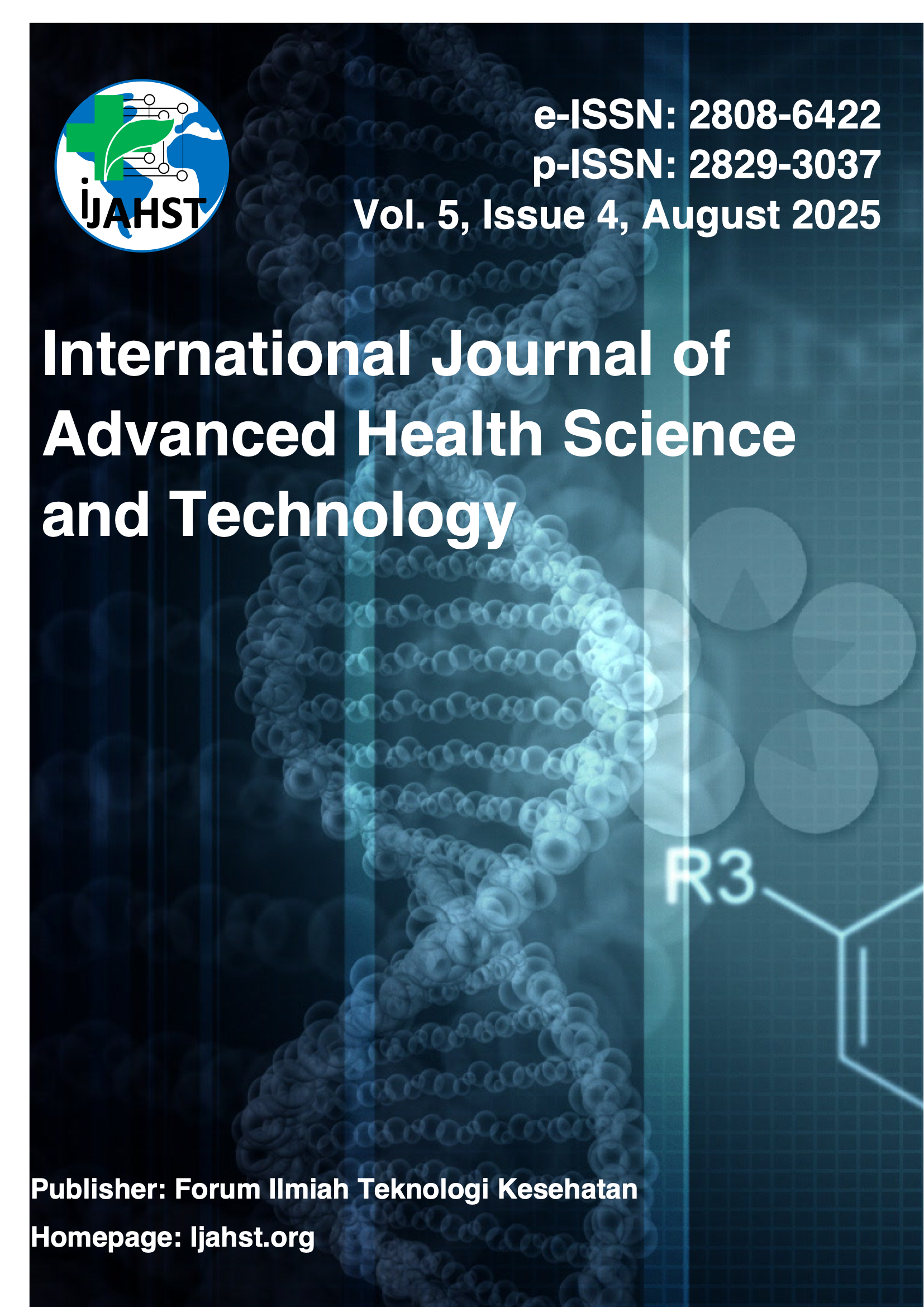Comparison Of Fixation Using NBF 10% and Honey 13% with Time Variation On Mice Heart Histology Preparations Using Hematoxylin Eosin Staining
Abstract
The fixation stage is the initial stage of making histopathology preparations whose role is to maintain the cell structure of the tissue so that it is like living tissue and prevent tissue damage, thus facilitating the process of macroscopic and microscopic analysis. The fixative solution that is often used for standard preservation in anatomical pathology laboratory examinations is Neutral Buffered Formalin (NBF) 10%, which has the advantage of a pH that is close to neutral and effective in fixing soft tissue for 12-24 hours. However, NBF 10% is carcinogenic and has high toxicity. There is a natural fixative solution, honey, which contains fructose and glucose and has an acidic pH that has antimicrobial, antioxidant and antiautolysis properties. In addition, honey has also been widely used as a preservative because it is easily available, affordable, and without toxicity effects. The purpose of this study was to determine the comparison of the quality of histology preparations of mice heart tissue fixed with 10% NBF and 13% honey with time variations. This research is a type of laboratory experimental research conducted in November 2024-April 2025. The sample used is the heart of healthy male mice. The number of sample preparations used was 27 sample preparations. Data analysis through scoring and statistically processed using non-parametric Kruskal-Walis test, if there is a difference followed by Mann-Whitney test. The results showed that fixation with 13% honey solution with a time variation of 24 hours has the same comparison of preparation quality results with 10% NBF solution for 24 hours. Based on the Mann-Whitney test, the result is 0.018 (p < 0.05) for 13% honey solution for 12 hours and 0.634 (p > 0.05) for 13% honey solution for 24 hours. It can be concluded that fixation with 13% honey solution for 24 hours is effective as an alternative fixation solution with natural ingredients that are safe in fixing tissues
Full text article
Authors
Copyright (c) 2025 Amirah Putri Zerlina, Dr. Juliana Christyaningsih, Ir, M.Kes

This work is licensed under a Creative Commons Attribution-ShareAlike 4.0 International License.
Authors who publish with this journal agree to the following terms:
- Authors retain copyright and grant the journal right of first publication with the work simultaneously licensed under a Creative Commons Attribution-ShareAlikel 4.0 International (CC BY-SA 4.0) that allows others to share the work with an acknowledgement of the work's authorship and initial publication in this journal.
- Authors are able to enter into separate, additional contractual arrangements for the non-exclusive distribution of the journal's published version of the work (e.g., post it to an institutional repository or publish it in a book), with an acknowledgement of its initial publication in this journal.
- Authors are permitted and encouraged to post their work online (e.g., in institutional repositories or on their website) prior to and during the submission process, as it can lead to productive exchanges, as well as earlier and greater citation of published work (See The Effect of Open Access).

